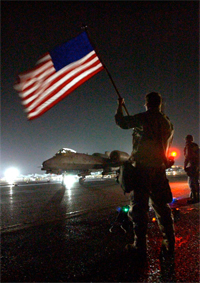Part 4A
Iraq's after-effects
Conflict redefined warfare, altered U.S.'s global role

Every major war carries with it many kinds of costs — in lives, limbs and dollars, to name a few.
Yet some costs can't be tagged with a hard number. The long-term consequences of invading Iraq in 2003 include not only America's lost blood and treasure but also the war's irreversible impact on history.
The nearly nine-year war may have ended in 2011, but its ripple effects will be felt for decades. It shaped the worldview of a generation of future military leaders and arguably set in motion sweeping geopolitical changes across the Middle East.
Continue reading part 4A...
Part 4B
Better care meant more warriors survived wounds

Over the course of Operation Iraqi Freedom, 3,542 troops were killed and 32,221 were wounded in combat action, according to Defense Department data.
Among the wounded, injuries run the gamut: amputated limbs, shredded muscles and bones, facial scars, burns, paralysis.
And tens of thousands of troops who deployed to Iraq — as many as 20 percent, by some estimates — suffered brain injuries or post-traumatic stress, long-term "invisible" wounds that may not be reflected in casualty data.
Continue reading part 4B...



